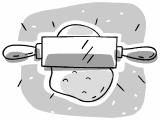Notes on and quotations from Pierre Bourdieu
|
According to Bourdieu, 'habitus' shapes the way we understand, interpret,
and act in everyday life. It is also crucial in understanding how
class is
reproduced.
Malcolm Richardson on habitus, field and capital
With illustrations from Howard Richards
Central to Bourdieu's analysis are his concepts of habitus, field, and capital. Habitus: The Latin word habitus (hexis in Greek) meaning literally, habit, or disposition, refers to a habitual appearance, condition or state, particularly of the body. It has long been used by philosophers and sociologists (For example, Hegel, Durkheim). For Bourdieu it refers to a,
"...system of acquired dispositions functioning on the practical level as categories of perception and assessment or as classificatory principles as well as being the organizing principles of action." (Bourdieu, 1990 In Other Words, pp 12-13).["Constructing the notion of habitus as a system of acquired dispositions functioning on the practical level as categories of perception and assessment or as classificatory principles as well as being the organizing principles of action meant constituting the social agent in his true role as the practical operator of the construction of objects."] Elsewhere, he defines habitus, as a system of "durable, transposable dispositions" (Logic of Practice, p. 53). Let us look more closely at this key concept. 1. Habitus is essentially the way in which the culture of a particular social group is embodied (internalised) in the individual, during the socialisation process beginning in early childhood. Habitus is, "society written into the body, into the biological individual" (Bourdieu, 1990 In Other Words, p. 63). This embodied culture provides the basis for a particular set of 'durable dispositions', i.e. ways of acting, seeing and making sense of the world. Habitus is not a set of consciously held beliefs or values. Rather, it operates below the level of consciousness as a kind of second nature, ever present in our tastes for particular kinds of food or music, as well as in the way we talk, walk, or dress. It operates as a kind of tacit knowledge, enabling us to deal with a wide variety of situations in predictable ways, but without our consciously following a set of rules - rather like the way we carry out our everyday routines.
"In each of us, to differing degrees is contained the person we were yesterday...our past personae predominate, since the present is necessarily insignificant compared with the long period of the past...It is just that we do not directly feel the influence of these past selves precisely because they are so deeply rooted in us. They constitute the unconscious part of ourselves" (See below) Habitus therefore, is "embodied history, internalised as second nature and so forgotten as history" (Ibid, p. 56). In other words, habitus is historically conditioned and deeply internalised, thus forming a kind of second nature and giving our thoughts, feelings and actions their apparently 'natural', or 'spontaneous' character.
Working class men may have different tastes to working class women, but in both cases they are recognisably working class tastes, and not say, middle class (Bourdieu has some discussion of gender e.g, in Distinction). According to Bourdieu then, judgements of taste express a class-based habitus, and are one of the defining elements of social identity. "Nothing more clearly affirms one's 'class', nothing more infallibly classifies, than tastes in music...there is no more 'classificatory' practice than concert-going, or playing a 'noble' instrument " (Bourdieu, 1979, Distinction, p. 18).The Proms, and the cello perhaps.
Field and
capital. Following Weber, Bourdieu views society as:
(i) differentiated into semi-autonomous spheres; and
(ii) subject to endless conflicts between irreconcilable interests.
Thus, society is made-up of many different social fields (e.g. economy,
education, politics, culture), with the political field (politics) being
dominant. Field's comprise individuals (and institutions) in a hierarchy of
power relations, competing with one another for valuable resources, or what
he calls, capital.
|
Who was to inherit the elite Paris university in the 1960s? - and
why?
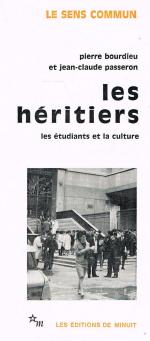
|
Pierre
Bourdieu and Jean-Claude Passeron
Les héritiers. Les étudiants et la culture
. Translated into English as The Inheritors: French
Students and their Relations to Culturein 1979,
Publication of the research of which
|
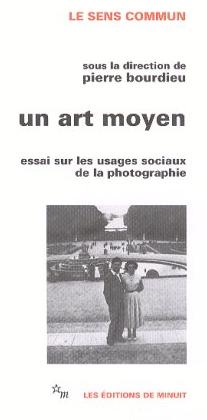
|
1965 Under
the direction of
Pierre Bourdieu, a group of French sociologists
published the results of their surveys into the social uses of
photography.
Un art moyen. Essais sur les usages sociaux de la photographie was translated into English in 1990 as Photography: A Middle-brow Art. |
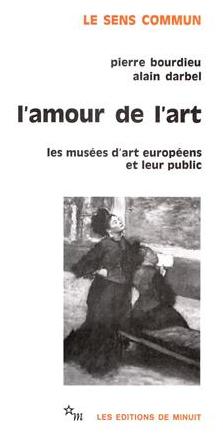
|
1969
Pierre Bourdieu and Alain Darbel; with Dominique Schnapper
published the results of their surveys into the use of European
Art Museums by different publics.
L'amour de l'art. Les musées d' art et leur public was translated into English in 1997 as The Love of Art: European Art Museums and their Public. |
P Bourdieu and J-C Passeron, Reproduction in Education, Society and Culture, (English 1977).
|
Summary of argument by Malcolm Richardson
Schools are cultural institutions, which embody and transmit the dominant culture. By the time they enter school, the children of the dominant classes, are already socialised into the dominant culture, and therefore possess the requisite social and cultural capital. [Bourdieu distinguished social and cultural capital from economic capital. The children with the requisite social and cultural capital possess the basic attitudes and skills, which will enable them to succeed.] Working-class children however, lack the requisite social and cultural capital. They experience schooling culturally challenging, and an alien social environment. As a result, most are 'turned-off' by school, and underachieve. Thus social hierarchies and social inequalities are perpetuated and reproduced from generation to generation. This is one possible explanation of why studies in Britain for example, show very little change in the relatively low proportion of working-class children entering university, despite considerable expansion over the last decade (see e.g. A H Halsey, et. al., 1997, Education, Culture, Economy, Society). The role of schools in social reproduction is concealed by a meritocratic ideology, which equates educational success with individual merit. This deludes the culturally privileged bourgeoisie into believing that they owe their dominance solely to their natural talents and abilities. Likewise, the culturally underprivileged working class believe their subordination is due to their lack of talents and abilities. Bourdieu maintains that schooling is the principal mechanism of symbolic violence, which is all the more durable and effective, because in this instance, it is exercised with the complicity of the great majority of those involved:
"symbolic violence is the violence which is exercised upon a social agent with his or her complicity" (Bourdieu and Wacquant 1992 Invitation to Reflexive Sociology, p. 167). |
1970 page 4:
"Every power to exert symbolic violence, i.e. every power which manages to impose meanings and to impose them as legitimate by concealing the power relations which are the basis of its force, adds its own specifically symbolic force to the power relations."
Gloss 1: To refuse this axiom, which states simultaneously the relative autonomy and the relative dependence of symbolic relations with respect to power relations, would amount to denying the possibility of a science of sociology. All the theories implicitly or explicitly constructed on the basis of other axioms lead one either to make the creative freedom of individuals the source of symbolic action, considered as autonomous from the objective conditions in which it is performed, or to annihilate symbolic action as such, by refusing it any autonomy with respect to its material conditions of existence. One is therefore entitled to regard this axiom as the principle of the theory of sociological knowledge
1970 [1990 revision]
... one posits the principle of the empirical work which leads the way out of he fashionable, fictitious dilemma of mechanical pan-structuralism and affirmation of the inalienable rights of the creative historical agent. Insofar as it defines the primordial conditions of production of the differences between habitus, the structure of class relations, regarded as a field of forces which expresses itself both in directly economic and political antagonisms and in a system of symbolic positions and oppositions, supplies the explanatory principle of the systematic characteristics which the practice of the agents of a determinate class takes on in the different areas of activity, even if that practice owes its specific form in each case to the laws proper to each of the sub-systems considered. (pp. 203-204, second edition 1990)
The specific role of the sociology of education is assumed once it has established itself as the science of the relations between cultural reproduction and social reproduction. This occurs when it endeavors to determine the contribution made by the educational system to the reproduction of the structure of power relationships and symbolic relationships between classes, by contributing to the reproduction of the structure of the distribution of cultural capital among these classes
The structures constitutive of a particular type of environment produce habitus, systems of durable, transposable dispositions, structured structures predisposed to function as structuring structures, that is, as principles of the generation and structuring of practices and representations which can be objectively "regulated" and "regular" without in anyway being the product of obedience to rules, objectively adapted to their goals without presupposing a conscious aiming at ends, or an express mastery of the operations necessary to attain them, and being all this, collectively orchestrated without being the product of the orchestrating action of a conductor. (Bourdieu 1977, p.72).
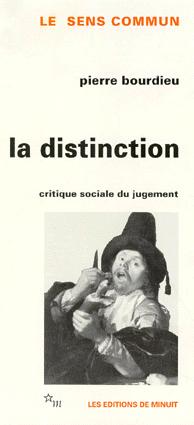
|
1979
La distinction. Critique sociale du
jugement
1979 Translated into English by
Richard Nice as
Distinction: A Social
Critique of the Judgment of Taste (1984).
Introduction p.2 ... scientific observation shows that cultural needs are the product of upbringing and education: surveys establish that all cultural practices (museum visits, concert-going, reading etc), and preferences in literature, painting or music, are closely linked to educational level (measured by qualifications or length of schooling) and secondarily to social origin.
The survey reports referenced are
Bourdieu and others
1965
on the
social uses of photography and
Bourdieu and Darbel 1969
on how
diifferent classes use art museums.
|
The Aristocracy of Culture
p.13: The analyses presented in
this book are based on a survey by
questionnaire, carried out in
1963
and
1967-68 on a sample of 1,217 people
Appendix 1: p. 504 The survey on which this work was based was
carried out
in 1963, after a preliminary survey by extended interview and ethnographic
observation, on a sample of 692 subjects (both sexes) in Paris, Lille and a
small provincial town.
To obtain a sample large enough to make it possible to analyse variations
in practices and opinions in relation to sufficiently homogeneous social
units, a complementary survey was carried out in 1967-68, bringing the
total number of subjects to 1,217
Because the survey measured relatively stable dispositions, this time-lag
does not seem to have affected the responses (except perhaps for
the question on singers, an area of culture where fashions
change more
rapidly.)
The Aristocracy of Culture
[Pierre Bourdieu showed a photograph taken by the American photographer
Russell Lee (1903-1986) to people in France
from different classes. The photograph is called "Hands of Old Homesteader
(Iowa, 1936)" and it is in the
Museum of Modern Art (MoMA) in New York.

|
pages 44-47:
Confronted with a photograph of an old woman's hands, the culturally most deprived express a more or less conventional emotion or an ethical complicity but never a specifically aesthetic judgement (other than a negative one):
"Oh, she's got terribly deformed hands! ...There's one thing I don't get (the left hand) - it's as if her left thumb was about to come away from her hand. Funny way of taking a photo. The old girl must've worked hard. Looks like she's got arthritis. She's definitely crippled, unless she's holding her hands like that (imitates gesture)? Yes, that's it, she's got her hand bent like that. Not like a duchess's hands or even a typist's! . . . I really feel sorry seeing that poor old woman's hands, they're all knotted, you might say" (manual worker [Ouvrier], Paris).
With the lower middle classes, exaltation of ethical virtues comes to the forefront ("hands worn out by toil"), sometimes tinged with populist sentimentality ("Poor old thing! Her hands must really hurt her. It really gives a sense of pain"); and sometimes even concern for aesthetic properties and references to painting make their appearance:
"It's as if it was a painting that had been photographed Must he really beautiful as a painting' (clerical worker [Employé], Paris [?])."
"That reminds me of a picture I saw in an exhibition of Spanish paintings, a monk with his hands clasped in front of him and deformed fingers" (technician [Technicien], Paris)
"The sort of hands you see in early Van Goghs, an old peasant woman or people eating potatoes" (junior executive [Cadre moyen], Paris).
At higher levels In the social hierarchy, the remarks become increasingly abstract, with (other peoples) hands, labour and old age functioning as allegories or symbols which serve as pretexts for general reflections on general problems:
"Those are the hands of someone who has worked too much, doing very hard manual work . . As a matter of fact it's very unusual to see hands like that" (engineer [Ingénieur], Paris).
"These two hands unquestionably evoke a poor and unhappy old age" (teacher [Professeur], provinces).
An aestheticizing reference to painting, sculpture or literature, more frequent, more varied and more subtly handled, resorts to the neutralization and distancing which bourgeois (discourse about the social world requires and performs.
"I find this a very beautiful photograph. It's the very symbol of toil. It puts me in mind of Flaubert's old servant-woman . . . That woman's gesture, at once very humble . . . It's terrible that work and poverty are so deforming (engineer [Ingénieur], Paris).
2. The Social Space and its Transformations
p.100
Objects, even industrial products, are not objective in the ordinary sense of the word, i.e., independent of the interest and tastes of those who perceive them, and they do not impose the self-evidence of a universal, unanimously approved meaning. The sociologist's task would be much easier if, when faced with each relationship between an 'independent variable' and a 'dependent variable', he did not have to determine how the perception and appreciation of what is designated by the 'dependent variable' vary according to the classes determined by the 'independent variable', or, in other words, identify the system of pertinent features on the basis of which each of the classes of agents was really determined. What science has to establish is the objectivity of the object which is established in the relationship between an object defined by the possibilities and impossibilities it offers, which are only revealed in the world of social uses... and the dispositions of an agent or class of agents, that is, that is, the schemes of perception, appreciation and action which constitute its objective utility in a practical usage.
The aim is not... to reintroduce any form of what is called 'lived
experience'; which is most often merely a thinly disguised projection of
the researcher's 'lived experience'
... p.101
... experiences do not have to be felt in order to be understood with an
understanding which may owe nothing to lived experience, still less to
sympathy. The habitus, an objective relationship between two objectivities,
enables
an intelligible and necessary relation to be established between practices
and a situation and a situation, the meaning of which is produced by the
habitus through categories of perception and appreciation that are
themselves produced by an observable social condition."
The Questionnaire
p. 517
Question 20: With the following subjects, is a photographer more likely to produce a beautiful, interesting, meaningless or ugly photo?
a landscape - a car crash - a little girl playing with a car - a pregnant woman - a still life - a woman breastfeeding - a metal structure - tramps quarrelling - cabbages - a sunset over the sea - a weaver at his loom - a folk dance - a rope - a butcher's stall - the bark of a tree - a famous monument - a scrapyard - a first communion - a wounded man - a snake - an 'old master'
Bourdieu, P. 1980/1990 The Logic of Practice. Translation into English by Richard Nice of Le Sens Pratique (1980)
Chapter 3 of
p.53: Objectivism constitutes the social world as a spectacle offered to an
observer who takes up a 'point of view' on the action and who, putting into
the object the principles of his relation to the object, proceeds as if it
were intended solely for knowledge and as if all the interactions within it
were purely symbolic exchanges. This viewpoint is the one taken from high
positions in the social structure, from which the social world is seen as a
representation (as the word is used in idealist philosophy, but also as in
painting) or a performance (in the theatrical or musical sense), and
practices are seen as no more than the acting-out of roles, the playing of
scores or the implementation of plans. The theory of practice as practice
insists, contrary to positivist materialism, that the objects of knowledge
are constructed, not passively recorded, and, contrary to intellectualist
idealism, that the principle of this construction is the system of
structured, structuring dispositions, the habitus, which is constituted in
practice and is always oriented towards practical functions. It is possible
to step down from the sovereign viewpoint from which objectivist idealism
orders the world, as Marx demands in the Theses on Feuerbach, but without
having to abandon to it the 'active aspect' of apprehension of the world by
reducing knowledge to a mere recording. To do this, one has to situate
oneself within 'real activity as such', that is, in the practical relation
to the world, the preoccupied, active presence in the world through which
the world imposes its presence, with its urgencies, its things to be done
and said, things made to be said, which directly govern words and deeds
without ever unfolding as a spectacle. One has to escape from the realism
of the structure, to which objectivism, a necessary stage in breaking with
primary experience and constructing the objective relationships,
necessarily leads when it hypostatizes these relations by treating them as
realities already constituted outside of the history of the group - without
falling back into subjectivism, which is quite incapable of giving an
account of the necessity of the social world. To do this, one has to return
to practice, the site of the dialectic of the opus operatum and the modus
operandi; of the objectified products and the incorporated products of
historical practice; of structures and habitus.
The bringing to light of the presuppositions inherent in objectivist
construction has paradoxically been delayed by the efforts of all those
who, in linguistics as in anthropology, have sought to 'correct' the
structuralist model by appealing to 'context' or 'situation' to account for
variations, exceptions and accidents (instead of making them simple
variants, absorbed into the structure, as the structuralists do)- They have
thus avoided a radical questioning of the objectivist mode of thought,
when, that is, they have not simply fallen back on to the free choice of a
rootless, unattached, pure subject. Thus, the method known as 'situational
analysis', which consists of 'observing people in a variety of social
situations' in order to determine 'the way in which individuals are able to
exercise choices within the limits of a specified social structure'
(Gluckman 1961; cf. also Van Velsen 1964), remains locked within the
framework of the rule and the exception, which Edmund Leach (often invoked
by the exponents of this method) spells out explicitly: 'I postulate that
structural systems in which all avenues of social action are narrowly
institutionalized are impossible. In all viable systems, there must be an
area where the individual is free to make choices so as to manipulate the
system to his advantage' (Leach 1962: 133).
Les conditionnements associes a une classe particuliere de conditions
d'existence produisent des
habitus, systemes de dispositions durables et transposables,
structures structurees predisposees a fonctionner comme structures
structurantes, c'est a dire en tant que principes generateurs et
organisateurs de pratiques et de representations qui peuvent etre
objectivement adaptees a leur but sans supposer la visee consciente de fins
et la maitrise expresse des operations necessaires pour les atteindre,
objectivement *reglees* et *regulieres* sans etre en rien le produit de
l'obeisance a des regles, et, etant tout cela, collectivement orchestrees
sans etre le produit de l'action organisatrice d'un chef d'orchestre.
The conditionings associated with a particular class of conditions of
existence produce
habitus, systems of durable, transposable dispositions,
structured structures predisposed to function as structuring structures,
that is, as principles which generate and organize practices and
representations that can be objectively adapted to their outcomes without
presupposing a conscious aiming at ends or an express mastery of the
operations necessary to attain them. Objectively *regulated* and
*regular* without being in any way the product of obedience to rules, they
can be collectively orchestrated without being the product of the
organizing action of a conductor
[The same passage plus
Howard Richards
' pictures:
The Logic of Practice Structures, Habitus, Practices
continued
...
The habitus, a product of history, produces individual and collective
practices - more history - in accordance with the schemes generated by
history. It ensures the active presence of past experiences, which,
deposited in each organism in the form of schemes of perception, thought
and action, tend to guarantee the 'correctness' of practices and their
constancy over time, more reliably than all formal rules and explicit
norms.3 This system of dispositions - a present past that tends to
perpetuate itself into the future by reactivation in similarly structured
practices, an internal law through which the law of external necessities,
irreducible to immediate constraints, is constantly exerted - is the
principle of the continuity and regularity which objectivism sees in social
practices without being able to account for it; and also of the regulated
transformations that cannot be explained either by the extrinsic,
instantaneous determinisms of mechanistic sociologism or by the purely
internal but equally instantaneous determination of spontaneist
subjectivism. Overriding the spurious opposition between the forces
inscribed in an earlier state of the system, outside the
body, and the internal forces arising instantaneously as motivations
springing from free will, the internal dispositions - the internalization
of externality - enable the external forces to exert themselves, but in
accordance with the specific logic of the organisms in which they are
incorporated, , i.e. in a durable, systematic and non-mechanical way. As an
acquired { system of generative schemes, the habitus makes possible the
free production of all the thoughts, perceptions and actions inherent in
the particular conditions of its production - and only those. Through the
habitus, the structure of which it is the product governs practice, not
along the paths of a mechanical determinism, but within the constraints and
limits initially set on its inventions. This infinite yet strictly limited
generative capacity is difficult to understand only so long as one remains
locked in the usual antinomies - which the concept of the habitus aims to
transcend - of determinism and freedom, conditioning and creativity,
consciousness and the unconscious, or the individual and society. Because
the habitus is an infinite capacity for generating products - thoughts,
perceptions, expressions and actions - whose limits are set by the
historically and socially situated conditions of its production, the
conditioned and conditional freedom it provides is as remote from creation
of unpredictable novelty as it is from simple mechanical reproduction of
the original conditioning.
The Logic of Practice Structures, Habitus, Practices
continued
p.56: Because they tend to reproduce the regularities immanent in the
conditions
in which their generative principle was produced while adjusting to the
demands inscribed as objective potentialities in the situation as defined
by the cognitive and motivating structures that constitute the habitus,
practices cannot be deduced either from the present conditions which may
seem to have provoked them or from the past conditions which have produced
the habitus, the durable principle of their production. They can therefore
only be accounted for by relating the social conditions in which the
habitus that generated them was constituted, to the social conditions in
which it is implemented, that is, through the scientific work of performing
the interrelationship of these two states of the social world that the
habitus performs, while concealing it, in and through practice. The
'unconscious', which enables one to dispense with this interrelating, is
never anything other than the forgetting of history which history itself
produces by realizing the objective structures that it generates in the
quasi-natures of habitus. As Durkheim
(1977: p.11) puts it:
Bourdieu: "Social Space and Symbolic Power"
If I had to characterize my work in two words, that is, as is the fashion
these days, to label it, I would speak of constructivist structuralism or
of structuralist constructivism, taking the word structuralism in a sense
very different from the one it has acquired in the Saussurean or
Lévi-Straussian tradition. By structuralism or structuralist, I mean
that there exist, within the social world itself and not only within
symbolic systems (language, myths, etc.), objective structures independent
of the consciousness and will of agents, which are capable of guiding and
constraining their practices or their representation. By constructivism, I
mean that there is a twofold social genesis, on the one hand of the schemes
of perception, thought, and action which are constitutive of what I call
habitus, and on the other hand of social structures and particularly of
what I call fields and of groups, notable those we ordinarily call social
classes. (p.14)
...
This relational mode of thinking is at the point of departure of the
construction presented in Distinction. It is a fair bet, however,
that the space, that is, the system of relations, will go unnoticed by the
reader, despite the use of diagrams (and of correspondence analysis, a very
sophisticated form of factorial analysis).
...
Thus the chapter of Distinction devoted to the different fractions of the
dominant class will be read as a description of the various lifestyles for
these fractions, instead of an analysis of locations in
the space of position of power - what I call the field of power."
(p. 16)
...
But just as subjectivism inclines one to reduce structures to visible
interactions, objectivism tends to deduce actions and interactions from the
structure. (p.17)
2001
Pierre Bourdieu videoed by Pierre Carles
Student of sociology, now 32, speaking to Bourdieu on the street:
Bourdieu in wireless interview:
What does the scientific study of human beings mean?
Like all scientists the sociologist tries to establish laws, to grasp
regularities, recurrent ways of being and to define their principle. Why do
people do the things they do? Why, for example, do teacher's children do
better at school than working class children?... How is it...that it
happens like this in society and not otherwise?
Could you explain to all of us what social inequality is and what
purpose it serves?
I will start with
social reproduction. I think one important thing I have
attempted to show is that the social world is not in a state of perpetual
change.
When I began to work in sociology [mid-1950s - early 1960s?], one of the
favourite words of
some sociologists was mutation. Everything is undergoing mutation - even
today. They say that men are changing because women are changing, etc.
Everything changes constantly.
It seemed to me, quite early on, that there
is stability, there is inertia. So I tried, using statistical techniques,
to document this inertia, to uncover the constants. That makes science
possible. It is because there are constants that we can understand things.
But I have also tried to explain why things are the way they are. Now we
come to the inequality. Among the factors that explain the permanence of
inequality you have first the transmission of
capital. A rich father can
leave his son money to launch a business, for example. If he does not do
well at school, if he fails in everything,.. the rich father can set him
up, give him a start, and by this action he will "reproduce" himself. The
son will not fall down the social ladder. He will not become a worker.
But today there is another kind of capital, which I call cultural capital.
This is more difficult to define.
It is language first of all. A certain mastery
of language, like speaking proper French. Of course, everyone in France
speaks French, even immigrants who have just arrived speak French to. But
they speak a French which is worthless on the school market. If you speak
that kind of language you will earn a straight F.
So it is language and
everything that comes with it. It is what you acquire in a cultured family,
from daddy telling you stories, from reading books, even children's books.
All of this is capital. These are scarce resources, unequally distributed.
And those who have more of it, because of this unequal distribution, reap
the profits attached to scarcity.
...
Another factor of inequality is good-will towards the school system,
what is called docility from the Latin word docilis: disposed to be
instructed... [Some children] are better prepared to give the school system
what it requires, which is cultural goodwill. And it pays. It is rewarded.
...
Later: I often say sociology is a combative sport. It is useful
for self-defense. When someone says something in a debate, just ask
yourself, what are the social reasons for saying that? If a priest tells
you there is no salvation outside religion: Well yes, his job depends on
it!... You use sociology to defend yourself. And using it for foul play is
strictly forbidden.
[manifold obstacles that stand in the way of a
science of society.] Chief among these obstacles is the deep-seated
opposition between two apparently antithetical theoretic stances,
objectivism and subjectivism, which
Bourdieu argues can and must be overcome. Objectivism holds that social
reality consists of sets of relations and forces that impose themselves
upon agents, "irrespective of their consciousness and will" (to invoke
Marx's wellknown
formula).
From this standpoint, sociology must follow the
Durkheimian precept and
'treat social facts as things' so as to uncover the objective
system of relations that determine the conduct and representations of
individuals. Subjectivism, on the contrary, takes these individual
representations as its basis: with
Herbert Blumer and Harold Garfinkel, it asserts that social
reality is but the sum total of the innumerable acts of interpretation
whereby people jointly construct meaningful lines of (inter)action.
The social world is thus liable to two seemingly antinomic readings: a
'structuralist' one that seeks out invisible relational patterns operating
behind the backs of agents and a 'constructivist' one that probes the
ordinary perceptions and actions of the individual. Bourdieu contends that
the opposition between these two approaches is artificial and mutilating.
For 'the two moments, objectivist and subjectivist, stand in dialectical
relationship'. (Bourdieu 1987/1994, p.125) On the one side, the social
structures that the sociologist lays bare in the objectivist phase, by
pushing aside the subjective representations of the agent, do mould the
latter's practices by establishing constraints and prescribing possible
paths. But, on the other side, these representations, and the mental
structures that underpin them, must also be taken into account insofar as
they guide the individual and collective struggles through which agents
seek to conserve or transform these objective structures. What is more,
social structures and mental structures are interlinked by a twofold
relationship of mutual constitution and correspondence.
To effect this synthesis of objectivism and subjectivism, social physics
and social phenomenology, Bourdieu forges an original conceptual arsenal
anchored by the notions of 'habitus', 'capital', 'field' and 'doxa'.
Habitus designates the system of durable and transposable dispositions
through which we perceive, judge and act in the world. These unconscious
schemata are acquired through lasting exposure to particular social
conditions and conditionings, via the internalization of external
constraints and possibilities. This means that they are shared by people
subjected to similar experiences even as each person has a unique
individual variant of the common matrix (this is why individuals of like
nationality, class, gender and so on spontaneously feel 'at home' with one
another). It implies also that these systems of dispositions are malleable,
since they inscribe into the body the evolving influence of the social
milieu, but within the limits set by primary (or earlier) experiences,
since it is habitus itself which at every moment filters such
influence.Thus the layering of the schemata that together compose habitus
displays varying degrees of integration (subproletarians typically have a
disjointed habitus mirroring their irregular conditions of living, while
persons experiencing transnational migration or undergoing great social
mobility often possess segmented or conflictive dispositional sets).
As the mediation between past influences and present stimuli, habitus is at
once structured, by the patterned social forces that produced it,
and structuring: it gives form and coherence to the various
activities of an individual
across the separate spheres of life. This is why Bourdieu defines it
variously as
'the product of structure, producer of practice, and reproducer of
structure',
the 'unchosen principle of all choices', or 'the practice-unifying and
practice-generating
principle' that permits 'regulated improvisation' and the 'conductorless
orchestration' of conduct.
Habitus is also a principle of both social
continuity and discontinuity: continuity because it stores social forces
into the
individual organism and transports them across time and space;
discontinuity
because it can be modified through the acquisition of new dispositions and
because it can trigger innovation whenever it encounters a social setting
discrepant with the setting from which it issues.
The system of dispositions people acquire depends on the (successive)
position(s) they occupy in society, that is, on their particular endowment
in capital. For Bourdieu, a capital is any resource effective in a given
social arena that enables one to appropriate the specific profits arising
out of participation and contest in it. Capital comes in three principal
species: economic (material and financial assets), cultural (scarce
symbolic goods, skills and titles) and social (resources accrued by virtue
of membership in a group). A fourth species, symbolic capital, designates
the effects of any form of capital when people do not perceive them as such
(as when we attribute lofty moral qualities to members of the upper class
as a result of their 'donating' time and money to charities). The position
of any individual, group or institution in social space may thus be charted
by two coordinates, the overall volume and the composition of the capital
they detain. A third coordinate, variation over time of this volume and
composition, records their trajectory through social space and provides
invaluable clues as to their habitus by revealing the manner and path
through which they reached the position they presently occupy.
But in advanced societies, people do not face an undifferentiated social
space. The various spheres of life, art, science, religion, the economy,
the law, politics and so on, tend to form distinct microcosms endowed with
their own rules, regularities and forms of authority - what Bourdieu calls
fields. A field is, in the first instance, a structured space of positions,
a force field that imposes its specific determinations upon all those who
enter it.Thus she who wants to succeed as a scientist has no choice but to
acquire the minimal scientific capital required and to abide by the mores
and regulations enforced by the scientific milieu of that time and place.
In the second instance, a field is an arena of struggle through which
agents and institutions seek to preserve or overturn the existing
distribution of capital (manifested, in the scientific field, by the
ranking of institutions, disciplines, theories, methods, topics, journals,
prizes and so on): it is a battlefield wherein the bases of identity and
hierarchy are endlessly disputed.
It follows that fields are historical constellations that arise, grow,
change shape
and sometimes wane or perish over time. In this regard, a third critical
property
of any field is its degree of autonomy, that is, the capacity it has
gained, in the
course of its development, to insulate itself from external influences and
to
uphold its own criteria of evaluation over and against those of
neighbouring or
intruding fields (scientific originality versus commercial profit or
political rectitude,
for example). Every field is thus the site of an ongoing clash between
those
who defend autonomous principles of judgement proper to that field and
those
who seek to introduce heteronomous standards because they need the support
of external forces to improve their dominated position in it.
That autonomy is always in danger and can be curtailed is demonstrated by
the evolution of the scientific field at the turn of the century, which
Bourdieu saw as doubly threatened, by the reassertion of economic interests
on the outside and by the 'internal denigration' of reason fostered by
'postmodern rantings' on the inside.
Just as habitus informs practice from within, a field structures action and
representation from without: it offers the individual a gamut of possible
stances and moves that she can adopt, each with its associated profits,
costs and subsequent potentialities. Also, position in the field inclines
agents towards particular patterns of thought and conduct: those who occupy
the dominant positions in a field tend to pursue strategies of conservation
(of the existing distribution of capital), while those relegated to
subordinate locations are more liable to deploy strategies of subversion.
Established members have a vested interest in preserving the existing order
and criteria of judgement, new entrants an interest in challenging them.
In lieu of the naive relation between the individual and society, then,
Bourdieu substitutes the constructed relationship between habitus and
field(s), that is, between 'history incarnate in bodies' as dispositions
and 'history objectified in things' in the form of systems of positions.The
crucial part of this equation is 'relationship between' because neither
habitus nor field has the capacity unilaterally to determine social action.
It takes the meeting of disposition and position, the correspondence (or
disjuncture) between mental structures and social structures, to generate
practice. This means that, to explain any social event or pattern, one
must inseparably dissect both the social constitution of the agent and the
makeup of the particular social universe within which she operates as well
as the particular conditions under which they come to encounter and impinge
upon each other. Indeed, for the constructivist or 'genetic structuralism'
advocated by Bourdieu, the analysis of objective structures - those of the
various fields - is inseparable from the analysis of the genesis within
biological individuals of the mental structures which are for a part the
product of the internalization of these very social structures and from the
analysis of the genesis of these structures themselves.
The concepts of habitus, capital and field are thus internally linked to
one another as each achieves its full analytical potency only in tandem
with the others. Together they enable Bourdieu to sociologize the notion of
doxa elaborated by Edmund Husserl: first, they suggest that the 'natural
attitude of everyday life', which leads us to take the world for granted,
is not an existential invariant, as phenomenologists claim, but hinges on
the close fit between the subjective categories of habitus and the
objective structures of the social setting in which people act; second,
that each relatively autonomous universe develops its own doxa as a set of
shared opinions and unquestioned beliefs (such as the sacred devotion to
reason among scientists) that bind participants to one another. This
conceptual triad also allows us to elucidate cases of reproduction - when
social and mental structures are in agreement and reinforce each other - as
well as transformation - when discordances arise between habitus and field
- leading to innovation, crisis and structural change, as evidenced in
Bourdieu's early work on cultural disjuncture and social transformation in
war-torn Algeria and rural Béarn30 as well as in two of his major
books, Distinction and Homo Academicus.
If you are referencing Malcolm Richardson's notes, my
referencing
suggestion for
this page
is a
bibliography
entry as follows:
With references in the
text to
If you are referencing a quotation from Pierre Bourdieu, my
referencing
suggestion for
this page
is a
bibliography
entry as follows:
With references in the
text to
Where the year is the year of the book.
For example:
Alternatively, or in addition, you could reference the work itself. For
example
Bourdieu, P. 1979/1984 Distinction. A Social Critique of the Judgement
of Taste. London: Routledge and Kegan Paul (1984), being a translation
into English by Richard Nice of La distinction. Critique sociale du
jugement (1979). Extracts at
http://studymore.org.uk/xybou.htm
With references in the
text to
Andrew Roberts likes to hear from users:


The conditionings associated with a particular class of conditions of
existence produce
habitus, systems of durable, transposable dispositions,
Durable = lasting
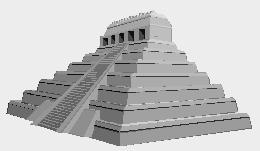
Transposable: like transferable skills
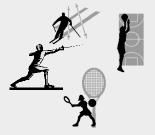
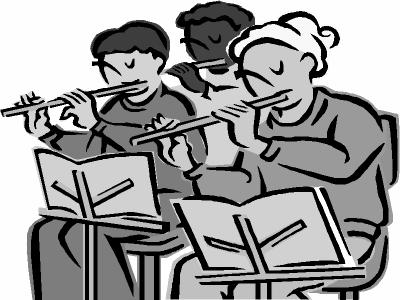
Look - No conductor
"In each one of us, in differing degrees, is contained the
person we were
yesterday, and indeed, in the nature of things it is even true that our
past personae predominate in us, since the present is necessarily
insignificant when compared with the long period of the past because of
which we have emerged in the form we have today. It is just that we don't
directly feel the influence of these past selves precisely because they are
so deeply rooted within us. They constitute the unconscious part of
ourselves. Consequently we have a strong tendency not to recognize their
existence and to ignore their legitimate demands. By contrast, with the
most recent acquisitions of civilization we are vividly aware of them just
because they are recent and consequently have not had time to be
assimilated into our collective unconscious."
"the reason why I loved your writings so much
at the beginning. I believed I was free, but I was not free at all.
Symbolic
violence and all that... I have been living exactly what you write about
for the last fifteen years."
Overcoming the Antinomy of Objectivism and Subjectivism:
Habitus, Capital, Field, Doxa
ABC Referencing
includes general advice on referencing internet sources as well as printed
sources.
Do you understand key
words and numbers?
Citation suggestion
Referencing
Richardson/Bourdieu Notes on and quotations from
Pierre Bourdieu with notes by Malcolm Richardson and quotations from
Pierre Bourdieu and colleagues. Available at
http://studymore.org.uk/xybou.htm
(Richardson/Bourdieu)
Bourdieu quotes Notes on and quotations from
Pierre Bourdieu
Available at
http://studymore.org.uk/xybou.htm
(Bourdieu quotes Year)
(Bourdieu quotes 1979)
(Bourdieu, P. 1979/1984 p.-)
 Top of
Page
Top of
Page
To contact him, please
use the Communication
Form
Malcolm Richardson introduces habitus field and capital
1980 Bourdieu Le Sens Pratique
1989 Bourdieu "Social Space and Symbolic Power"

